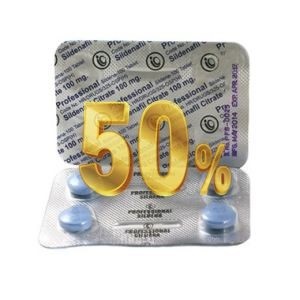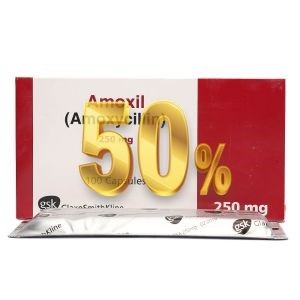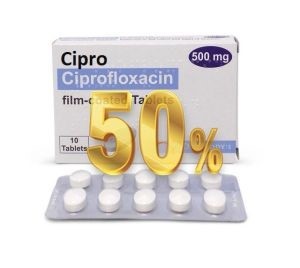Lijekovi na mreži
Bestseleri
-

Viagra Generička
200mg- 200mg
- 150mg
- 100mg
- 50mg
- 25mg
593.68Kn296.84Kn10 tableta- 10 tableta593.68Kn296.84Kn
- 20 tableta894.10Kn447.05Kn
- 30 + 2 tablete1203.96Kn601.98Kn
- 60 + 4 tablete1814.53Kn907.27Kn
- 90 + 6 tableta2475.48Kn1237.74Kn
- 120 + 8 tableta2968.42Kn1484.21Kn
- 180 + 10 tableta4022.92Kn2011.46Kn
- 270 + 10 tableta5504.32Kn2752.16Kn
- 360 + 10 tableta6985.86Kn3492.93Kn
Dodajte u korpu593.68Kn296.84Kn -

Cialis Generički
60mg- 60mg
- 40mg
- 20mg
- 10mg
- 5mg
- 2.5mg
597.49Kn298.74Kn10 tableta- 10 tableta597.49Kn298.74Kn
- 20 tableta951.02Kn475.51Kn
- 30 + 2 tablete1236.83Kn618.41Kn
- 60 + 4 tablete2102.47Kn1051.23Kn
- 90 + 6 tableta2850.47Kn1425.24Kn
- 120 + 8 tableta3481.14Kn1740.57Kn
- 180 + 10 tableta4538.23Kn2269.12Kn
- 270 + 10 tableta6434.79Kn3217.40Kn
- 360 + 10 tableta8269.11Kn4134.55Kn
Dodajte u korpu597.49Kn298.74Kn -

Levitra Generička
60mg- 60mg
- 40mg
- 20mg
- 10mg
687.28Kn343.64Kn10 tableta- 10 tableta687.28Kn343.64Kn
- 20 tableta1178.39Kn589.19Kn
- 30 + 2 tablete1586.10Kn793.05Kn
- 60 + 4 tablete2882.13Kn1441.06Kn
- 90 + 6 tableta4229.59Kn2114.80Kn
- 120 + 8 tableta5396.57Kn2698.28Kn
- 180 + 10 tableta7267.71Kn3633.86Kn
- 270 + 10 tableta10356.36Kn5178.18Kn
- 360 + 10 tableta13141.54Kn6570.77Kn
Dodajte u korpu687.28Kn343.64Kn -

Viagra Brand
100mg- 100mg
593.38Kn296.69Kn4 tablete- 4 tablete593.38Kn296.69Kn
- 8 tableta867.32Kn433.66Kn
- 12 tableta1051.46Kn525.73Kn
- 14 + 2 tablete1290.40Kn645.20Kn
- 22 + 2 tablete1749.55Kn874.77Kn
- 34 + 2 tablete2372.30Kn1186.15Kn
- 48 + 4 tablete3002.51Kn1501.25Kn
- 64 + 4 tablete3828.58Kn1914.29Kn
- 76 + 4 tablete4443.72Kn2221.86Kn
- 92 + 4 tablete5259.60Kn2629.80Kn
- 120 + 8 tableta6817.85Kn3408.92Kn
Dodajte u korpu593.38Kn296.69Kn -

Cialis Brand
20mg- 20mg
608.60Kn304.30Kn4 tablete- 4 tablete608.60Kn304.30Kn
- 8 tableta894.25Kn447.13Kn
- 12 tableta1135.17Kn567.58Kn
- 14 + 2 tablete1387.80Kn693.90Kn
- 22 + 2 tablete1872.67Kn936.33Kn
- 34 + 2 tablete2666.78Kn1333.39Kn
- 48 + 4 tablete3256.66Kn1628.33Kn
- 64 + 4 tablete3973.92Kn1986.96Kn
- 76 + 4 tablete4626.35Kn2313.17Kn
- 92 + 4 tablete5478.60Kn2739.30Kn
- 120 + 8 tableta7207.75Kn3603.88Kn
Dodajte u korpu608.60Kn304.30Kn
-

Levitra Brand
20mg- 20mg
664.91Kn332.45Kn4 tablete- 4 tablete664.91Kn332.45Kn
- 8 tableta942.80Kn471.40Kn
- 12 tableta1188.43Kn594.22Kn
- 14 + 2 tablete1482.31Kn741.15Kn
- 22 + 2 tablete2008.11Kn1004.06Kn
- 34 + 2 tablete2732.22Kn1366.11Kn
- 48 + 4 tablete3408.09Kn1704.04Kn
- 64 + 4 tablete4325.78Kn2162.89Kn
- 76 + 4 tablete4991.60Kn2495.80Kn
- 92 + 4 tablete5887.83Kn2943.91Kn
- 120 + 8 tableta7655.64Kn3827.82Kn
Dodajte u korpu664.91Kn332.45Kn -

Kamagra
100mg- 100mg
806.44Kn403.22Kn12 tableta- 12 tableta806.44Kn403.22Kn
- 20 tableta1247.79Kn623.89Kn
- 32 tablete1757.31Kn878.65Kn
- 60 + 4 tablete2918.19Kn1459.10Kn
- 84 + 6 tableta3832.84Kn1916.42Kn
- 120 + 6 tableta4793.75Kn2396.88Kn
- 180 + 6 tableta6330.85Kn3165.42Kn
- 360 + 6 tableta12174.24Kn6087.12Kn
Dodajte u korpu806.44Kn403.22Kn -

Avana
200mg- 200mg
- 100mg
- 50mg
1824.42Kn912.21Kn12 tableta- 12 tableta1824.42Kn912.21Kn
- 20 tableta2912.87Kn1456.43Kn
- 30 + 2 tablete4553.30Kn2276.65Kn
- 60 + 4 tablete9028.98Kn4514.49Kn
- 90 + 6 tableta13368.30Kn6684.15Kn
- 120 + 8 tableta17630.31Kn8815.16Kn
- 180 + 8 tableta25578.45Kn12789.23Kn
- 270 + 10 tableta37541.45Kn18770.73Kn
- 360 + 20 tableta50209.54Kn25104.77Kn
Dodajte u korpu1824.42Kn912.21Kn -

Viagra Professional
100mg- 100mg
639.04Kn319.52Kn10 tableta- 10 tableta639.04Kn319.52Kn
- 20 tableta1031.07Kn515.54Kn
- 30 tableta1288.88Kn644.44Kn
- 60 + 2 tablete2126.82Kn1063.41Kn
- 90 + 2 tablete3001.59Kn1500.80Kn
- 120 + 4 tablete3809.40Kn1904.70Kn
- 180 + 4 tablete4888.87Kn2444.44Kn
- 270 + 6 tableta6623.35Kn3311.68Kn
- 360 + 6 tableta7639.66Kn3819.83Kn
Dodajte u korpu639.04Kn319.52Kn -

Cialis Professional
40mg- 40mg
- 20mg
943.41Kn471.71Kn10 tableta- 10 tableta943.41Kn471.71Kn
- 20 tableta1597.82Kn798.91Kn
- 30 tableta2158.78Kn1079.39Kn
- 60 + 2 tablete3802.10Kn1901.05Kn
- 90 + 2 tablete5052.47Kn2526.24Kn
- 120 + 4 tablete6329.32Kn3164.66Kn
- 180 + 4 tablete8960.65Kn4480.32Kn
- 270 + 6 tableta13021.01Kn6510.50Kn
Dodajte u korpu943.41Kn471.71Kn -

Levitra Professional
20mg- 20mg
903.99Kn452.00Kn10 tableta- 10 tableta903.99Kn452.00Kn
- 20 tableta1463.89Kn731.95Kn
- 30 tableta1726.57Kn863.28Kn
- 60 + 2 tablete3233.83Kn1616.92Kn
- 90 + 2 tablete4413.28Kn2206.64Kn
- 120 + 4 tablete5050.34Kn2525.17Kn
- 180 + 4 tablete7280.50Kn3640.25Kn
- 270 + 6 tableta10710.80Kn5355.40Kn
- 360 + 6 tableta13256.75Kn6628.37Kn
Dodajte u korpu903.99Kn452.00Kn -
Viagra Super Active
100mg- 100mg
416.84Kn208.42Kn10 tableta- 10 tableta416.84Kn208.42Kn
- 20 + 4 tablete696.41Kn348.20Kn
- 30 + 6 tableta928.95Kn464.48Kn
- 60 + 8 tableta1693.54Kn846.77Kn
- 90 + 10 tableta2400.30Kn1200.15Kn
- 120 + 16 tableta2875.13Kn1437.56Kn
- 180 + 20 tableta4072.38Kn2036.19Kn
- 270 + 30 tableta5661.53Kn2830.76Kn
- 360 + 30 tableta6825.61Kn3412.80Kn
Dodajte u korpu416.84Kn208.42Kn -

Fildena Super Active
100mg- 100mg
416.84Kn208.42Kn10 tableta- 10 tableta416.84Kn208.42Kn
- 20 + 4 tablete696.41Kn348.20Kn
- 30 + 6 tableta928.95Kn464.48Kn
- 60 + 8 tableta1693.54Kn846.77Kn
- 90 + 10 tableta2400.30Kn1200.15Kn
- 120 + 16 tableta2875.13Kn1437.56Kn
- 180 + 20 tableta4072.38Kn2036.19Kn
- 270 + 30 tableta5661.53Kn2830.76Kn
- 360 + 30 tableta6825.61Kn3412.80Kn
Dodajte u korpu416.84Kn208.42Kn -
Cialis Super Active
20mg- 20mg
806.44Kn403.22Kn10 tableta- 10 tableta806.44Kn403.22Kn
- 20 + 4 tablete1338.49Kn669.24Kn
- 30 + 6 tableta1856.54Kn928.27Kn
- 60 + 8 tableta3338.23Kn1669.12Kn
- 90 + 10 tableta4553.14Kn2276.57Kn
- 120 + 16 tableta5538.86Kn2769.43Kn
- 180 + 20 tableta7559.91Kn3779.96Kn
- 270 + 30 tableta9587.66Kn4793.83Kn
Dodajte u korpu806.44Kn403.22Kn -

Tadalista Super Active
20mg- 20mg
806.44Kn403.22Kn10 tableta- 10 tableta806.44Kn403.22Kn
- 20 + 4 tablete1338.49Kn669.24Kn
- 30 + 6 tableta1856.54Kn928.27Kn
- 60 + 8 tableta3338.23Kn1669.12Kn
- 90 + 10 tableta4553.14Kn2276.57Kn
- 120 + 16 tableta5538.86Kn2769.43Kn
- 180 + 20 tableta7559.91Kn3779.96Kn
- 270 + 30 tableta9587.66Kn4793.83Kn
Dodajte u korpu806.44Kn403.22Kn -

Viagra Mekane Tablete
100mg- 100mg
535.24Kn267.62Kn10 tableta- 10 tableta535.24Kn267.62Kn
- 20 tableta912.97Kn456.49Kn
- 30 + 4 tablete1203.80Kn601.90Kn
- 60 + 6 tableta2216.76Kn1108.38Kn
- 90 + 6 tableta2975.72Kn1487.86Kn
- 120 + 8 tableta3365.63Kn1682.81Kn
- 180 + 10 tableta4564.86Kn2282.43Kn
- 270 + 10 tableta6086.74Kn3043.37Kn
Dodajte u korpu535.24Kn267.62Kn -

Cialis Mekane Tablete
20mg- 20mg
565.68Kn282.84Kn10 tableta- 10 tableta565.68Kn282.84Kn
- 20 + 2 tablete970.80Kn485.40Kn
- 30 + 4 tablete1267.27Kn633.63Kn
- 60 + 4 tablete2309.90Kn1154.95Kn
- 90 + 6 tableta3141.00Kn1570.50Kn
- 120 + 6 tableta3603.80Kn1801.90Kn
- 180 + 8 tableta5118.83Kn2559.41Kn
- 270 + 10 tableta6832.46Kn3416.23Kn
Dodajte u korpu565.68Kn282.84Kn -

Levitra Mekane Tablete
20mg- 20mg
757.59Kn378.79Kn10 tableta- 10 tableta757.59Kn378.79Kn
- 20 tableta1082.36Kn541.18Kn
- 30 + 2 tablete1437.41Kn718.71Kn
- 60 + 4 tablete2585.67Kn1292.83Kn
- 90 + 6 tableta3497.57Kn1748.79Kn
- 120 + 8 tableta4181.81Kn2090.90Kn
- 180 + 10 tableta5770.64Kn2885.32Kn
- 270 + 10 tableta7562.65Kn3781.33Kn
- 360 + 20 tableta9887.92Kn4943.96Kn
Dodajte u korpu757.59Kn378.79Kn -

Kamagra Mekane Tablete
100mg- 100mg
834.14Kn417.07Kn12 tableta- 12 tableta834.14Kn417.07Kn
- 20 tableta1156.47Kn578.24Kn
- 32 tablete1740.87Kn870.44Kn
- 60 + 4 tablete2617.47Kn1308.74Kn
- 84 + 4 tablete3377.80Kn1688.90Kn
- 120 + 6 tableta4518.90Kn2259.45Kn
- 180 + 8 tableta6166.48Kn3083.24Kn
- 272 + 12 tableta8601.03Kn4300.51Kn
Dodajte u korpu834.14Kn417.07Kn -

Kamagra Gold
100mg- 100mg
- 50mg
806.44Kn403.22Kn12 tableta- 12 tableta806.44Kn403.22Kn
- 20 tableta1247.79Kn623.89Kn
- 32 tablete1757.31Kn878.65Kn
- 60 + 4 tablete2918.19Kn1459.10Kn
- 84 + 6 tableta3832.84Kn1916.42Kn
- 120 + 6 tableta4793.75Kn2396.88Kn
- 180 + 6 tableta6330.85Kn3165.42Kn
- 360 + 6 tableta12174.24Kn6087.12Kn
Dodajte u korpu806.44Kn403.22Kn -

Kamagra Polo
100mg- 100mg
872.64Kn436.32Kn12 tableta- 12 tableta872.64Kn436.32Kn
- 20 tableta1211.11Kn605.55Kn
- 32 tablete1824.58Kn912.29Kn
- 60 + 4 tablete2745.01Kn1372.50Kn
- 84 + 4 tablete3543.69Kn1771.84Kn
- 120 + 6 tableta4741.71Kn2370.85Kn
- 180 + 8 tableta6471.92Kn3235.96Kn
- 272 + 12 tableta9028.98Kn4514.49Kn
Dodajte u korpu872.64Kn436.32Kn -

Kamagra Šumeće Tablete
100mg- 100mg
748.00Kn374.00Kn14 tableta- 14 tableta748.00Kn374.00Kn
- 28 tableta1316.42Kn658.21Kn
- 42 + 7 tableta1782.27Kn891.13Kn
- 63 + 7 tableta2492.83Kn1246.42Kn
- 84 + 7 tableta2941.02Kn1470.51Kn
Dodajte u korpu748.00Kn374.00Kn -

Kamagra Oralni Gel
100mg- 100mg
790.61Kn395.31Kn10 vrećica- 10 vrećica790.61Kn395.31Kn
- 21 vrećica1390.23Kn695.12Kn
- 30 + 5 vrećica1974.02Kn987.01Kn
- 63 + 7 vrećica3249.20Kn1624.60Kn
- 90 + 8 vrećica4399.74Kn2199.87Kn
- 110 + 9 vrećica4853.56Kn2426.78Kn
- 220 + 18 vrećica9598.46Kn4799.23Kn
Dodajte u korpu790.61Kn395.31Kn -

Viagra Oralni Gel
100mg- 100mg
671.91Kn335.95Kn10 vrećica- 10 vrećica671.91Kn335.95Kn
- 21 vrećica1140.04Kn570.02Kn
- 30 + 5 vrećica1677.87Kn838.93Kn
- 63 + 7 vrećica2761.75Kn1380.87Kn
- 90 + 8 vrećica3739.70Kn1869.85Kn
- 110 + 9 vrećica4125.50Kn2062.75Kn
- 220 + 18 vrećica8149.64Kn4074.82Kn
Dodajte u korpu671.91Kn335.95Kn -

Apcalis SX Oralni Gel
20mg- 20mg
851.49Kn425.74Kn10 vrećica- 10 vrećica851.49Kn425.74Kn
- 17 + 4 vrećica1384.45Kn692.22Kn
- 30 + 5 vrećica2055.90Kn1027.95Kn
- 50 + 6 vrećica2121.80Kn1060.90Kn
- 70 + 7 vrećica2681.09Kn1340.54Kn
- 120 + 13 vrećica4063.86Kn2031.93Kn
Dodajte u korpu851.49Kn425.74Kn -

Priligy Generički Dapoxetin
60mg- 60mg
690.32Kn345.16Kn10 tableta- 10 tableta690.32Kn345.16Kn
- 20 + 4 tablete1120.56Kn560.28Kn
- 30 + 6 tableta1545.77Kn772.88Kn
- 60 + 8 tableta2653.24Kn1326.62Kn
- 90 + 10 tableta3850.19Kn1925.10Kn
- 120 + 10 tableta4946.25Kn2473.12Kn
- 180 + 10 tableta7171.07Kn3585.54Kn
Dodajte u korpu690.32Kn345.16Kn -

Super Kamagra
160mg- 160mg
608.60Kn304.30Kn4 tablete- 4 tablete608.60Kn304.30Kn
- 8 tableta1003.37Kn501.69Kn
- 12 tableta1465.41Kn732.71Kn
- 20 + 4 tablete2251.61Kn1125.81Kn
- 32 + 4 tablete3163.37Kn1581.68Kn
- 60 + 4 tablete4967.25Kn2483.62Kn
- 92 + 6 tableta6938.99Kn3469.49Kn
- 152 + 8 tableta10567.75Kn5283.87Kn
Dodajte u korpu608.60Kn304.30Kn -

Super P Force
160mg- 160mg
547.11Kn273.56Kn4 tablete- 4 tablete547.11Kn273.56Kn
- 8 tableta903.54Kn451.77Kn
- 12 tableta1318.10Kn659.05Kn
- 20 + 4 tablete2026.38Kn1013.19Kn
- 32 + 4 tablete2858.99Kn1429.50Kn
- 60 + 4 tablete4470.51Kn2235.25Kn
- 92 + 6 tableta6245.01Kn3122.51Kn
- 152 + 8 tableta9510.96Kn4755.48Kn
Dodajte u korpu547.11Kn273.56Kn -

Red Viagra
150mg- 150mg
- 100mg
558.98Kn279.49Kn10 tableta- 10 tableta558.98Kn279.49Kn
- 20 tableta821.36Kn410.68Kn
- 30 + 2 tablete1079.77Kn539.89Kn
- 60 + 4 tablete1660.82Kn830.41Kn
- 90 + 6 tableta2197.28Kn1098.64Kn
- 120 + 8 tableta2650.95Kn1325.48Kn
- 180 + 10 tableta3530.14Kn1765.07Kn
- 270 + 10 tableta4875.93Kn2437.97Kn
- 360 + 10 tableta6250.49Kn3125.25Kn
Dodajte u korpu558.98Kn279.49Kn -

Cialis Black
80mg- 80mg
627.16Kn313.58Kn10 tableta- 10 tableta627.16Kn313.58Kn
- 20 tableta1041.11Kn520.56Kn
- 30 + 2 tablete1291.62Kn645.81Kn
- 60 + 4 tablete2188.30Kn1094.15Kn
- 90 + 6 tableta3013.01Kn1506.50Kn
- 120 + 8 tableta3837.56Kn1918.78Kn
- 180 + 10 tableta5169.20Kn2584.60Kn
- 270 + 10 tableta7288.71Kn3644.36Kn
- 360 + 20 tableta9272.94Kn4636.47Kn
Dodajte u korpu627.16Kn313.58Kn -

Cenforce
200mg- 200mg
- 150mg
- 100mg
- 50mg
- 25mg
611.49Kn305.74Kn10 tableta- 10 tableta611.49Kn305.74Kn
- 20 tableta920.89Kn460.44Kn
- 30 + 2 tablete1240.02Kn620.01Kn
- 60 + 4 tablete1869.01Kn934.51Kn
- 90 + 6 tableta2549.75Kn1274.87Kn
- 120 + 8 tableta3057.45Kn1528.72Kn
- 180 + 10 tableta4143.61Kn2071.80Kn
- 270 + 10 tableta5669.44Kn2834.72Kn
- 360 + 10 tableta7195.42Kn3597.71Kn
Dodajte u korpu611.49Kn305.74Kn -

Cobra
120mg- 120mg
699.91Kn349.96Kn10 tableta- 10 tableta699.91Kn349.96Kn
- 20 tableta1048.42Kn524.21Kn
- 30 + 5 tableta1367.86Kn683.93Kn
- 45 + 5 tableta1872.82Kn936.41Kn
- 70 + 5 tableta2424.19Kn1212.10Kn
- 90 + 10 tableta3062.32Kn1531.16Kn
- 120 + 10 tableta3836.49Kn1918.25Kn
- 180 + 10 tableta5179.24Kn2589.62Kn
- 270 + 10 tableta7042.78Kn3521.39Kn
- 360 + 20 tableta8627.20Kn4313.60Kn
Dodajte u korpu699.91Kn349.96Kn -

Vidalista
60mg- 60mg
- 40mg
- 20mg
- 10mg
- 5mg
- 2.5mg
615.45Kn307.72Kn10 tableta- 10 tableta615.45Kn307.72Kn
- 20 tableta979.48Kn489.74Kn
- 30 + 2 tablete1273.96Kn636.98Kn
- 60 + 4 tablete2165.48Kn1082.74Kn
- 90 + 6 tableta2936.00Kn1468.00Kn
- 120 + 8 tableta3585.54Kn1792.77Kn
- 180 + 10 tableta4674.44Kn2337.22Kn
- 270 + 10 tableta6690.31Kn3345.16Kn
- 360 + 10 tableta8517.17Kn4258.59Kn
Dodajte u korpu615.45Kn307.72Kn -

Vigora
100mg- 100mg
- 50mg
553.35Kn276.68Kn12 tableta- 12 tableta553.35Kn276.68Kn
- 20 tableta726.70Kn363.35Kn
- 30 + 2 tablete915.56Kn457.78Kn
- 60 + 4 tablete1536.33Kn768.17Kn
- 90 + 6 tableta2057.12Kn1028.56Kn
- 120 + 8 tableta2415.52Kn1207.76Kn
- 180 + 8 tableta3178.74Kn1589.37Kn
- 270 + 10 tableta4312.23Kn2156.12Kn
- 360 + 20 tableta5378.46Kn2689.23Kn
Dodajte u korpu553.35Kn276.68Kn -

Silagra
100mg- 100mg
553.35Kn276.68Kn12 tableta- 12 tableta553.35Kn276.68Kn
- 20 tableta726.70Kn363.35Kn
- 30 + 2 tablete915.56Kn457.78Kn
- 60 + 4 tablete1536.33Kn768.17Kn
- 90 + 6 tableta2057.12Kn1028.56Kn
- 120 + 8 tableta2415.52Kn1207.76Kn
- 180 + 8 tableta3178.74Kn1589.37Kn
- 270 + 10 tableta4312.23Kn2156.12Kn
- 360 + 20 tableta5378.46Kn2689.23Kn
Dodajte u korpu553.35Kn276.68Kn -

Suhagra
100mg- 100mg
- 50mg
- 25mg
553.35Kn276.68Kn12 tableta- 12 tableta553.35Kn276.68Kn
- 20 tableta726.70Kn363.35Kn
- 30 + 2 tablete915.56Kn457.78Kn
- 60 + 4 tablete1536.33Kn768.17Kn
- 90 + 6 tableta2057.12Kn1028.56Kn
- 120 + 8 tableta2415.52Kn1207.76Kn
- 180 + 8 tableta3178.74Kn1589.37Kn
- 270 + 10 tableta4312.23Kn2156.12Kn
- 360 + 20 tableta5378.46Kn2689.23Kn
Dodajte u korpu553.35Kn276.68Kn -

Tadacip
20mg- 20mg
602.51Kn301.26Kn12 tableta- 12 tableta602.51Kn301.26Kn
- 20 tableta872.34Kn436.17Kn
- 30 + 2 tablete1022.55Kn511.27Kn
- 60 + 4 tablete1821.38Kn910.69Kn
- 90 + 6 tableta2466.50Kn1233.25Kn
- 120 + 8 tableta2999.77Kn1499.88Kn
- 180 + 8 tableta4005.73Kn2002.86Kn
- 270 + 10 tableta5344.52Kn2672.26Kn
- 360 + 20 tableta6997.43Kn3498.71Kn
Dodajte u korpu602.51Kn301.26Kn -

Tadapox
80mg- 80mg
879.34Kn439.67Kn10 tableta- 10 tableta879.34Kn439.67Kn
- 20 tableta1360.86Kn680.43Kn
- 30 + 2 tablete1812.55Kn906.28Kn
- 60 + 4 tablete3499.55Kn1749.78Kn
- 90 + 6 tableta4859.95Kn2429.98Kn
- 120 + 8 tableta6083.54Kn3041.77Kn
- 180 + 10 tableta8368.79Kn4184.39Kn
- 270 + 10 tableta11725.89Kn5862.95Kn
- 360 + 20 tableta15218.60Kn7609.30Kn
Dodajte u korpu879.34Kn439.67Kn -

Tadalis Sx
20mg- 20mg
602.51Kn301.26Kn12 tableta- 12 tableta602.51Kn301.26Kn
- 20 tableta872.34Kn436.17Kn
- 30 + 2 tablete1022.55Kn511.27Kn
- 60 + 4 tablete1821.38Kn910.69Kn
- 90 + 6 tableta2466.50Kn1233.25Kn
- 120 + 8 tableta2999.77Kn1499.88Kn
- 180 + 8 tableta4005.73Kn2002.86Kn
- 270 + 10 tableta5344.52Kn2672.26Kn
- 360 + 20 tableta6997.43Kn3498.71Kn
Dodajte u korpu602.51Kn301.26Kn -

Rapamicin
1mg- 1mg
844.64Kn422.32Kn10 tableta- 10 tableta844.64Kn422.32Kn
- 20 tableta1518.98Kn759.49Kn
- 30 + 2 tablete2371.69Kn1185.84Kn
- 60 + 4 tablete4704.42Kn2352.21Kn
- 90 + 6 tableta6968.97Kn3484.48Kn
- 120 + 10 tableta9318.44Kn4659.22Kn
- 180 + 10 tableta13474.53Kn6737.26Kn
- 270 + 10 tableta19644.36Kn9822.18Kn
- 360 + 20 tableta26313.37Kn13156.68Kn
Dodajte u korpu844.64Kn422.32Kn -

Clomid Generički
100mg- 100mg
- 50mg
- 25mg
651.82Kn325.91Kn10 tableta- 10 tableta651.82Kn325.91Kn
- 20 tableta755.46Kn377.73Kn
- 30 + 2 tablete899.73Kn449.87Kn
- 60 + 4 tablete1204.56Kn602.28Kn
- 90 + 6 tableta1515.48Kn757.74Kn
- 120 + 8 tableta1971.89Kn985.95Kn
- 180 + 10 tableta2720.35Kn1360.18Kn
- 270 + 10 tableta3921.72Kn1960.86Kn
- 360 + 20 tableta5204.66Kn2602.33Kn
Dodajte u korpu651.82Kn325.91Kn -

Lovegra - Viagra za žene
100mg- 100mg
379.71Kn189.85Kn4 tablete- 4 tablete379.71Kn189.85Kn
- 8 tableta595.51Kn297.75Kn
- 12 tableta781.48Kn390.74Kn
- 20 tableta1061.51Kn530.75Kn
- 30 + 2 tablete1539.99Kn769.99Kn
- 60 + 4 tablete2606.21Kn1303.11Kn
- 90 + 6 tableta3633.48Kn1816.74Kn
- 120 + 8 tableta4260.49Kn2130.24Kn
- 180 + 8 tableta5605.83Kn2802.91Kn
- 240 + 12 tableta6664.75Kn3332.37Kn
- 360 + 12 tableta9462.26Kn4731.13Kn
Dodajte u korpu379.71Kn189.85Kn -

Bimat 0,03%
3ml- 3ml
510.59Kn255.29Kn1 bočica- 1 bočica510.59Kn255.29Kn
- 2 bočice905.36Kn452.68Kn
- 3 bočice1285.22Kn642.61Kn
- 4 bočice1695.22Kn847.61Kn
- 5 bočice2105.51Kn1052.76Kn
- 6 bočice2515.66Kn1257.83Kn
- 7 bočice2926.41Kn1463.21Kn
- 8 bočice3331.08Kn1665.54Kn
- 9 bočice3691.31Kn1845.65Kn
Dodajte u korpu510.59Kn255.29Kn -

Lumigan 0,03%
3ml- 3ml
1094.99Kn547.49Kn1 bočica- 1 bočica1094.99Kn547.49Kn
- 2 bočice2067.62Kn1033.81Kn
- 3 bočice2965.37Kn1482.69Kn
- 4 bočice3866.17Kn1933.09Kn
- 5 bočice4774.88Kn2387.44Kn
- 6 bočice5600.19Kn2800.10Kn
- 7 bočice6525.04Kn3262.52Kn
- 8 bočice7323.26Kn3661.63Kn
- 9 bočice8293.46Kn4146.73Kn
Dodajte u korpu1094.99Kn547.49Kn -

Careprost 0,03%
3ml- 3ml
790.61Kn395.31Kn1 bočica- 1 bočica790.61Kn395.31Kn
- 2 bočice1436.04Kn718.02Kn
- 3 bočice2096.99Kn1048.50Kn
- 4 bočice2635.28Kn1317.64Kn
- 5 bočice3239.31Kn1619.66Kn
- 6 bočice3830.56Kn1915.28Kn
- 7 bočice4386.96Kn2193.48Kn
- 8 bočice4922.35Kn2461.18Kn
- 9 bočice5417.11Kn2708.56Kn
Dodajte u korpu790.61Kn395.31Kn -

Amoksicilin
1000mg- 1000mg
- 625mg
- 500mg
- 250mg
752.26Kn376.13Kn10 tableta- 10 tableta752.26Kn376.13Kn
- 20 tableta1159.52Kn579.76Kn
- 30 + 2 tablete1670.41Kn835.20Kn
- 60 + 4 tablete3029.60Kn1514.80Kn
- 90 + 6 tableta4406.13Kn2203.07Kn
- 120 + 8 tableta5621.81Kn2810.90Kn
- 180 + 10 tableta7953.77Kn3976.89Kn
- 270 + 10 tableta11520.44Kn5760.22Kn
- 360 + 20 tableta15216.46Kn7608.23Kn
Dodajte u korpu752.26Kn376.13Kn -

Bactrim Generički
960mg- 960mg
334.05Kn167.03Kn10 tableta- 10 tableta334.05Kn167.03Kn
- 20 tableta455.80Kn227.90Kn
- 30 + 2 tablete599.77Kn299.89Kn
- 60 + 4 tablete823.03Kn411.51Kn
- 90 + 6 tableta1169.41Kn584.70Kn
- 120 + 8 tableta1456.74Kn728.37Kn
- 180 + 10 tableta1999.13Kn999.57Kn
- 270 + 10 tableta2815.62Kn1407.81Kn
- 360 + 20 tableta3675.33Kn1837.66Kn
Dodajte u korpu334.05Kn167.03Kn -

Cipro Generički
750mg- 750mg
- 500mg
- 250mg
750.28Kn375.14Kn10 tableta- 10 tableta750.28Kn375.14Kn
- 20 tableta1059.38Kn529.69Kn
- 30 + 2 tablete1359.80Kn679.90Kn
- 60 + 4 tablete1964.74Kn982.37Kn
- 90 + 6 tableta2887.61Kn1443.80Kn
- 120 + 8 tableta3800.12Kn1900.06Kn
- 180 + 10 tableta5474.49Kn2737.24Kn
- 270 + 10 tableta7968.99Kn3984.50Kn
- 360 + 20 tableta10608.08Kn5304.04Kn
Dodajte u korpu750.28Kn375.14Kn -

Doxycycline
100mg- 100mg
602.36Kn301.18Kn10 tableta- 10 tableta602.36Kn301.18Kn
- 20 tableta752.11Kn376.06Kn
- 30 + 2 tablete895.32Kn447.66Kn
- 60 + 4 tablete1329.97Kn664.98Kn
- 90 + 6 tableta1701.15Kn850.58Kn
- 120 + 8 tableta2199.41Kn1099.71Kn
- 180 + 10 tableta3037.97Kn1518.98Kn
- 270 + 10 tableta4389.24Kn2194.62Kn
- 360 + 20 tableta5841.41Kn2920.71Kn
Dodajte u korpu602.36Kn301.18Kn -

Flagyl Generički
400mg- 400mg
- 200mg
516.68Kn258.34Kn30 + 2 tablete- 30 + 2 tablete516.68Kn258.34Kn
- 60 + 4 tablete815.12Kn407.56Kn
- 90 + 6 tableta1085.86Kn542.93Kn
- 120 + 8 tableta1306.53Kn653.26Kn
- 180 + 10 tableta1762.48Kn881.24Kn
- 270 + 10 tableta2520.83Kn1260.42Kn
- 360 + 20 tableta3272.34Kn1636.17Kn
Dodajte u korpu516.68Kn258.34Kn -

Aciklovir
800mg- 800mg
- 400mg
- 200mg
332.53Kn166.26Kn10 tableta- 10 tableta332.53Kn166.26Kn
- 20 tableta605.55Kn302.78Kn
- 30 + 2 tablete852.71Kn426.35Kn
- 60 + 4 tablete1441.52Kn720.76Kn
- 90 + 6 tableta1973.11Kn986.56Kn
- 120 + 10 tableta2532.86Kn1266.43Kn
- 180 + 10 tableta3557.69Kn1778.84Kn
- 270 + 10 tableta4986.12Kn2493.06Kn
- 360 + 20 tableta6592.91Kn3296.46Kn
Dodajte u korpu332.53Kn166.26Kn -

Aciklovir Krema 5%
10g- 10g
- 5g
297.53Kn148.76Kn1 tuba- 1 tuba297.53Kn148.76Kn
- 2 tube425.36Kn212.68Kn
- 3 tube532.50Kn266.25Kn
- 4 tube664.30Kn332.15Kn
- 5 tube787.57Kn393.79Kn
Dodajte u korpu297.53Kn148.76Kn -

Vermox Generički
100mg- 100mg
413.65Kn206.82Kn10 tableta- 10 tableta413.65Kn206.82Kn
- 20 tableta544.98Kn272.49Kn
- 30 + 2 tablete711.32Kn355.66Kn
- 60 + 4 tablete1142.32Kn571.16Kn
- 90 + 6 tableta1517.77Kn758.88Kn
- 120 + 8 tableta1938.11Kn969.05Kn
- 180 + 10 tableta2641.67Kn1320.84Kn
- 270 + 10 tableta3762.53Kn1881.27Kn
- 360 + 20 tableta4885.37Kn2442.69Kn
Dodajte u korpu413.65Kn206.82Kn -

Diflucan Generički
400mg- 400mg
- 200mg
- 150mg
- 100mg
- 50mg
790.31Kn395.15Kn10 tableta- 10 tableta790.31Kn395.15Kn
- 20 tableta1242.92Kn621.46Kn
- 30 + 2 tablete1841.62Kn920.81Kn
- 60 + 4 tablete3283.14Kn1641.57Kn
- 90 + 6 tableta4857.37Kn2428.68Kn
- 120 + 8 tableta6330.85Kn3165.42Kn
- 180 + 10 tableta9168.53Kn4584.27Kn
- 270 + 10 tableta13424.61Kn6712.30Kn
- 360 + 20 tableta18101.33Kn9050.67Kn
Dodajte u korpu790.31Kn395.15Kn -

Ventolin Generički
4mg- 4mg
- 2mg
471.02Kn235.51Kn30 tableta- 30 tableta471.02Kn235.51Kn
- 60 tableta794.88Kn397.44Kn
- 90 + 6 tableta1081.14Kn540.57Kn
- 120 + 10 tableta1226.48Kn613.24Kn
- 180 + 10 tableta1648.65Kn824.32Kn
- 270 + 10 tableta2174.30Kn1087.15Kn
- 360 + 20 tableta2834.49Kn1417.25Kn
Dodajte u korpu471.02Kn235.51Kn -

Generički Inhalator Ventolin
100mcg- 100mcg
483.20Kn241.60Kn1 inhalator- 1 inhalator483.20Kn241.60Kn
- 2 inhalatora769.46Kn384.73Kn
- 3 inhalatora1052.38Kn526.19Kn
- 4 inhalatora1332.55Kn666.28Kn
- 5 inhalatora1607.86Kn803.93Kn
- 6 inhalatora1867.80Kn933.90Kn
- 7 inhalatora2126.36Kn1063.18Kn
- 8 inhalatora2402.13Kn1201.06Kn
- 9 inhalatora2650.34Kn1325.17Kn
Dodajte u korpu483.20Kn241.60Kn -

Zyrtec Generički
10mg- 10mg
- 5mg
579.38Kn289.69Kn10 tableta- 10 tableta579.38Kn289.69Kn
- 20 tableta666.58Kn333.29Kn
- 30 + 2 tablete760.02Kn380.01Kn
- 60 + 4 tablete1055.12Kn527.56Kn
- 90 + 6 tableta1325.86Kn662.93Kn
- 120 + 8 tableta1643.47Kn821.74Kn
- 180 + 10 tableta2226.65Kn1113.33Kn
- 270 + 10 tableta3195.78Kn1597.89Kn
- 360 + 20 tableta4164.61Kn2082.31Kn
Dodajte u korpu579.38Kn289.69Kn -

Aralen Generički
500mg- 500mg
- 250mg
600.68Kn300.34Kn10 tableta- 10 tableta600.68Kn300.34Kn
- 20 tableta725.63Kn362.81Kn
- 30 + 2 tablete862.45Kn431.22Kn
- 60 + 4 tablete1216.89Kn608.45Kn
- 90 + 6 tableta1623.99Kn812.00Kn
- 120 + 8 tableta2071.42Kn1035.71Kn
- 180 + 10 tableta2814.25Kn1407.13Kn
- 270 + 10 tableta4048.95Kn2024.47Kn
- 360 + 20 tableta5378.91Kn2689.46Kn
Dodajte u korpu600.68Kn300.34Kn -

Olumiant Generički
4mg- 4mg
- 2mg
912.21Kn456.11Kn10 tableta- 10 tableta912.21Kn456.11Kn
- 20 tableta1503.00Kn751.50Kn
- 30 + 2 tablete2052.86Kn1026.43Kn
- 60 + 4 tablete3498.49Kn1749.24Kn
- 90 + 6 tableta5173.00Kn2586.50Kn
- 120 + 8 tableta6806.58Kn3403.29Kn
- 180 + 10 tableta9886.40Kn4943.20Kn
- 270 + 10 tableta14275.64Kn7137.82Kn
- 360 + 20 tableta18787.70Kn9393.85Kn
Dodajte u korpu912.21Kn456.11Kn -

Stromectol Generički
12mg- 12mg
- 6mg
- 3mg
732.63Kn366.32Kn10 tableta- 10 tableta732.63Kn366.32Kn
- 20 tableta1016.92Kn508.46Kn
- 30 + 2 tablete1214.15Kn607.08Kn
- 60 + 4 tablete1916.34Kn958.17Kn
- 90 + 6 tableta2558.88Kn1279.44Kn
- 120 + 8 tableta3383.28Kn1691.64Kn
- 180 + 10 tableta4706.55Kn2353.27Kn
- 270 + 10 tableta6278.80Kn3139.40Kn
- 360 + 20 tableta7601.00Kn3800.50Kn
Dodajte u korpu732.63Kn366.32Kn -

Zithromax Generički
1000mg- 1000mg
- 500mg
- 250mg
- 100mg
1055.27Kn527.63Kn10 tableta- 10 tableta1055.27Kn527.63Kn
- 20 tableta1515.33Kn757.67Kn
- 30 + 2 tablete2209.31Kn1104.65Kn
- 60 + 4 tablete3925.07Kn1962.53Kn
- 90 + 6 tableta5762.12Kn2881.06Kn
- 120 + 8 tableta7376.22Kn3688.11Kn
- 180 + 10 tableta10673.06Kn5336.53Kn
- 270 + 10 tableta15640.15Kn7820.08Kn
- 360 + 20 tableta21050.72Kn10525.36Kn
Dodajte u korpu1055.27Kn527.63Kn -

Glucophage Generički
1000mg- 1000mg
- 850mg
- 500mg
- 300mg
462.35Kn231.17Kn30 + 2 tablete- 30 + 2 tablete462.35Kn231.17Kn
- 60 + 4 tablete840.07Kn420.04Kn
- 90 + 6 tableta1186.30Kn593.15Kn
- 120 + 8 tableta1504.83Kn752.41Kn
- 180 + 10 tableta2129.71Kn1064.86Kn
- 270 + 10 tableta3020.77Kn1510.38Kn
- 360 + 20 tableta3942.57Kn1971.28Kn
Dodajte u korpu462.35Kn231.17Kn -

Rybelsus
14mg- 14mg
- 7mg
- 3mg
3650.83Kn1825.41Kn10 tableta- 10 tableta3650.83Kn1825.41Kn
- 20 tableta7137.74Kn3568.87Kn
- 30 tableta10528.03Kn5264.01Kn
- 60 tableta20228.00Kn10114.00Kn
Dodajte u korpu3650.83Kn1825.41Kn -

Xenical Generički
120mg- 120mg
787.27Kn393.63Kn10 tableta- 10 tableta787.27Kn393.63Kn
- 20 tableta949.65Kn474.82Kn
- 30 tableta1185.54Kn592.77Kn
- 40 tableta1459.48Kn729.74Kn
- 50 tableta1680.15Kn840.07Kn
- 60 tableta1916.80Kn958.40Kn
- 90 tableta2601.04Kn1300.52Kn
- 120 tableta3179.96Kn1589.98Kn
- 150 + 10 tableta3822.80Kn1911.40Kn
- 180 + 10 tableta4481.77Kn2240.88Kn
- 270 + 10 tableta6519.56Kn3259.78Kn
- 360 + 20 tableta8732.37Kn4366.18Kn
Dodajte u korpu787.27Kn393.63Kn -

Accutane Generički
40mg- 40mg
- 30mg
- 20mg
- 10mg
- 5mg
755.92Kn377.96Kn10 tableta- 10 tableta755.92Kn377.96Kn
- 20 tableta960.91Kn480.46Kn
- 30 + 2 tablete1213.24Kn606.62Kn
- 60 + 4 tablete1971.44Kn985.72Kn
- 90 + 6 tableta2882.89Kn1441.44Kn
- 120 + 8 tableta3801.64Kn1900.82Kn
- 180 + 10 tableta5582.69Kn2791.35Kn
- 270 + 10 tableta8102.92Kn4051.46Kn
- 360 + 20 tableta10880.49Kn5440.25Kn
Dodajte u korpu755.92Kn377.96Kn -

Tretinoin Krema
0.05%/20g- 0.05%/20g
- 0.025%/20g
456.71Kn228.36Kn1 tuba- 1 tuba456.71Kn228.36Kn
- 2 tube731.41Kn365.71Kn
- 3 tube823.64Kn411.82Kn
- 4 tube1036.09Kn518.05Kn
- 5 tube1218.26Kn609.13Kn
- 7 tube1600.10Kn800.05Kn
- 9 tube1925.78Kn962.89Kn
- 10 tube1986.05Kn993.02Kn
Dodajte u korpu456.71Kn228.36Kn -

Tretinoin Gel
0.1%/20g- 0.1%/20g
- 0.05%/20g
- 0.025%/20g
608.90Kn304.45Kn1 tuba- 1 tuba608.90Kn304.45Kn
- 2 tube1157.54Kn578.77Kn
- 3 tube1644.99Kn822.50Kn
- 4 tube2072.18Kn1036.09Kn
- 5 tube2436.52Kn1218.26Kn
- 7 tube3197.00Kn1598.50Kn
- 9 tube3837.86Kn1918.93Kn
- 10 tube3964.48Kn1982.24Kn
Dodajte u korpu608.90Kn304.45Kn -

Propecia Generička
5mg- 5mg
- 1mg
578.16Kn289.08Kn20 tableta- 20 tableta578.16Kn289.08Kn
- 30 tableta745.57Kn372.78Kn
- 60 + 2 tablete1353.71Kn676.85Kn
- 90 + 4 tablete1971.59Kn985.79Kn
- 120 + 4 tablete2492.07Kn1246.03Kn
- 180 + 4 tablete3529.68Kn1764.84Kn
- 360 + 6 tableta6962.42Kn3481.21Kn
Dodajte u korpu578.16Kn289.08Kn -

Lasix Generički
100mg- 100mg
- 40mg
393.10Kn196.55Kn20 tableta- 20 tableta393.10Kn196.55Kn
- 30 tableta452.76Kn226.38Kn
- 60 + 4 tablete847.38Kn423.69Kn
- 90 + 6 tableta1066.53Kn533.26Kn
- 120 + 10 tableta1286.75Kn643.37Kn
- 180 + 10 tableta1793.23Kn896.61Kn
- 270 + 10 tableta2514.44Kn1257.22Kn
- 360 + 20 tableta3296.84Kn1648.42Kn
Dodajte u korpu393.10Kn196.55Kn -

Eliquis
5mg- 5mg
- 2.5mg
2892.48Kn1446.24Kn20 tableta- 20 tableta2892.48Kn1446.24Kn
- 40 tableta5541.91Kn2770.95Kn
- 60 tableta8035.35Kn4017.67Kn
- 80 tableta10446.30Kn5223.15Kn
- 100 tableta12713.74Kn6356.87Kn
Dodajte u korpu2892.48Kn1446.24Kn -

Xarelto Generički
20mg- 20mg
- 10mg
2552.49Kn1276.24Kn28 tableta- 28 tableta2552.49Kn1276.24Kn
- 56 tableta4866.35Kn2433.17Kn
- 84 tablete7043.85Kn3521.92Kn
- 112 tablete9067.94Kn4533.97Kn
- 140 tableta11074.99Kn5537.49Kn
- 168 + 28 tableta14854.72Kn7427.36Kn
Dodajte u korpu2552.49Kn1276.24Kn -

Nolvadex Generički
20mg- 20mg
- 10mg
470.72Kn235.36Kn30 tableta- 30 tableta470.72Kn235.36Kn
- 60 tableta812.83Kn406.42Kn
- 90 + 6 tableta1096.97Kn548.48Kn
- 120 + 10 tableta1365.88Kn682.94Kn
- 180 + 10 tableta1851.97Kn925.98Kn
- 270 + 10 tableta2600.12Kn1300.06Kn
- 360 + 20 tableta3412.50Kn1706.25Kn
Dodajte u korpu470.72Kn235.36Kn -

Antabuse Generički
500mg- 500mg
- 250mg
576.94Kn288.47Kn20 tableta- 20 tableta576.94Kn288.47Kn
- 30 + 2 tablete698.39Kn349.19Kn
- 60 + 4 tablete1156.32Kn578.16Kn
- 90 + 6 tableta1521.72Kn760.86Kn
- 120 + 8 tableta1885.60Kn942.80Kn
- 180 + 10 tableta2582.47Kn1291.23Kn
- 270 + 10 tableta3705.00Kn1852.50Kn
- 360 + 20 tableta4929.20Kn2464.60Kn
Dodajte u korpu576.94Kn288.47Kn -

Champix Generički
1mg- 1mg
- 0.5mg
1368.47Kn684.23Kn10 tableta- 10 tableta1368.47Kn684.23Kn
- 20 tableta2273.22Kn1136.61Kn
- 30 + 2 tablete3150.74Kn1575.37Kn
- 60 + 4 tablete5852.98Kn2926.49Kn
- 90 + 6 tableta8694.01Kn4347.01Kn
- 120 + 8 tableta11551.64Kn5775.82Kn
- 180 + 10 tableta16659.51Kn8329.75Kn
- 270 + 10 tableta24288.97Kn12144.48Kn
- 360 + 20 tableta32403.15Kn16201.57Kn
Dodajte u korpu1368.47Kn684.23Kn -

Prozac Generički
60mg- 60mg
- 40mg
- 20mg
- 10mg
642.99Kn321.50Kn20 tableta- 20 tableta642.99Kn321.50Kn
- 30 + 2 tablete852.10Kn426.05Kn
- 60 + 4 tablete1432.54Kn716.27Kn
- 90 + 6 tableta1925.78Kn962.89Kn
- 120 + 8 tableta2422.22Kn1211.11Kn
- 180 + 10 tableta3497.12Kn1748.56Kn
- 270 + 10 tableta4906.83Kn2453.41Kn
- 360 + 20 tableta6419.12Kn3209.56Kn
Dodajte u korpu642.99Kn321.50Kn -

Strattera Generičk
40mg- 40mg
- 25mg
- 18mg
- 10mg
1438.17Kn719.09Kn30 tableta- 30 tableta1438.17Kn719.09Kn
- 60 tableta2511.85Kn1255.93Kn
- 90 + 6 tableta3667.11Kn1833.55Kn
- 120 + 10 tableta4748.71Kn2374.35Kn
- 180 + 10 tableta6564.91Kn3282.46Kn
- 270 + 10 tableta9502.89Kn4751.45Kn
- 360 + 20 tableta12665.19Kn6332.60Kn
Dodajte u korpu1438.17Kn719.09Kn -

Baclofen Generički
25mg- 25mg
- 10mg
605.55Kn302.78Kn10 tableta- 10 tableta605.55Kn302.78Kn
- 20 tableta730.35Kn365.17Kn
- 30 + 2 tablete856.36Kn428.18Kn
- 60 + 4 tablete1213.70Kn606.85Kn
- 90 + 6 tableta1521.11Kn760.56Kn
- 120 + 8 tableta1972.20Kn986.10Kn
- 180 + 10 tableta2654.00Kn1327.00Kn
- 270 + 10 tableta3836.95Kn1918.48Kn
- 360 + 20 tableta5089.91Kn2544.96Kn
Dodajte u korpu605.55Kn302.78Kn

Do
30% bonus tableta
za sve narudžbe!
-
01
Sigurno
-
02
Lagano
-
03
Diskretno

-
Najbolja cijena i kvaliteta
Nudimo proizvode po najpovoljnijim cijenama i dostavu iz naših skladišta diljem Europe.
-
Brza poštarina
Narudžbu ćemo poslati u roku od 24 sata nakon potvrde vaše uplate.
-
Činimo Vas sretnimi
Brinemo o svakom kupcu i naporno radimo kako bismo pružili najbolju uslugu i najkvalitetnije proizvode!
































